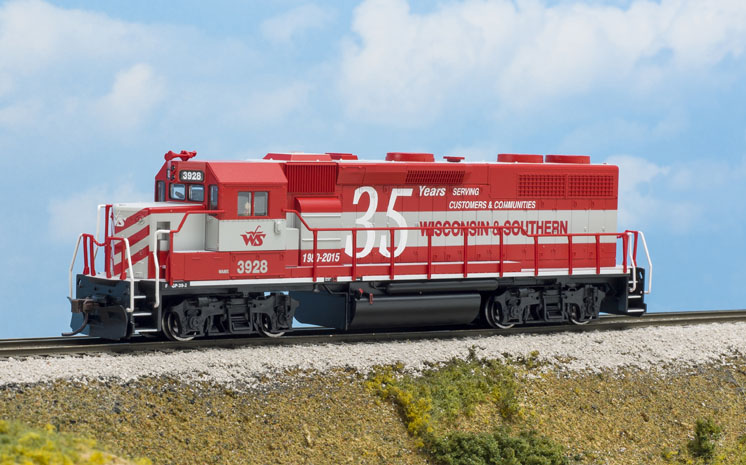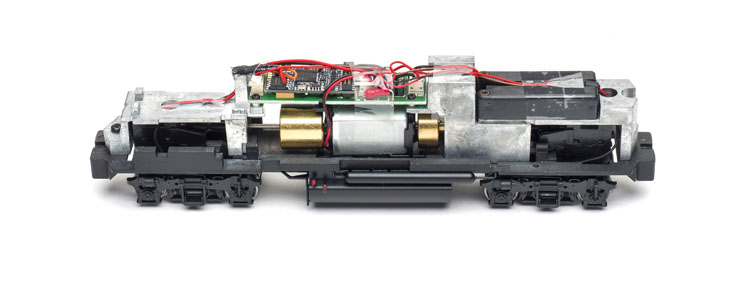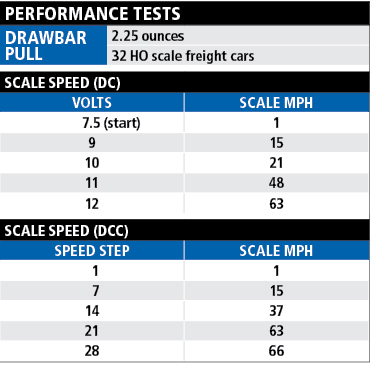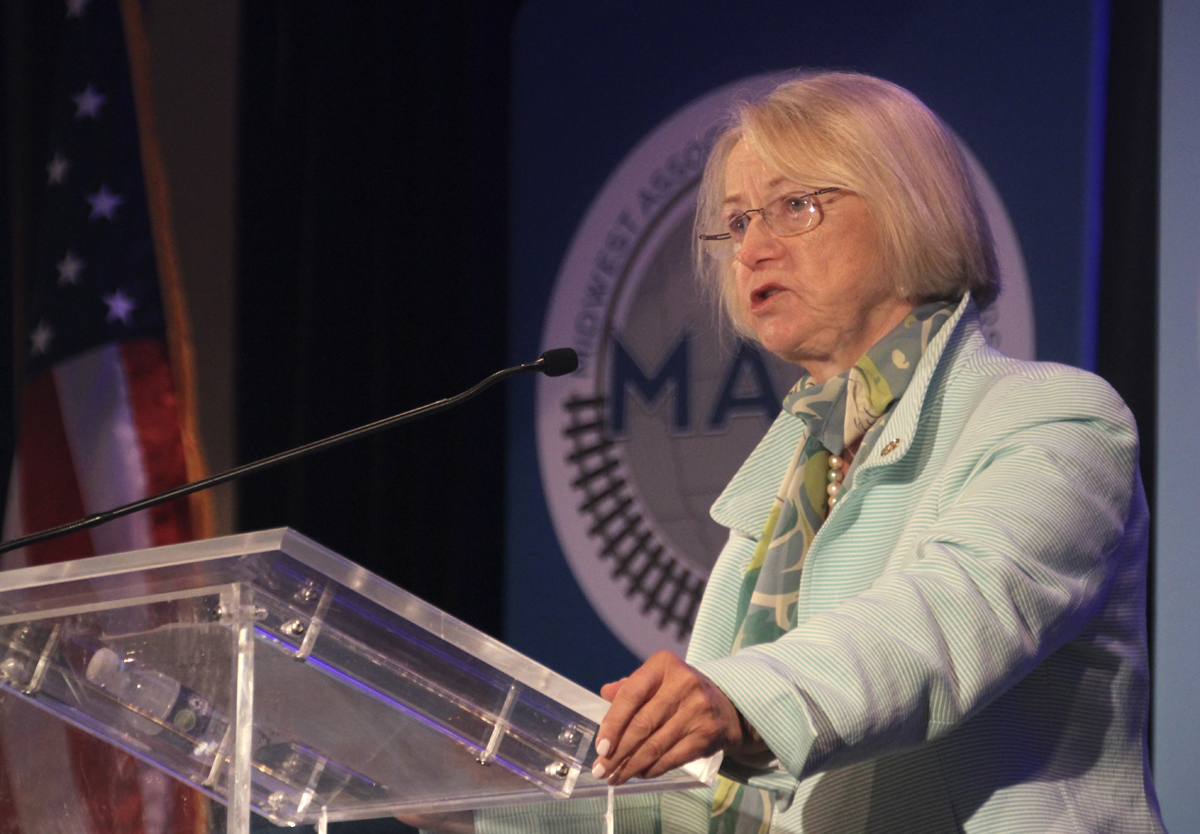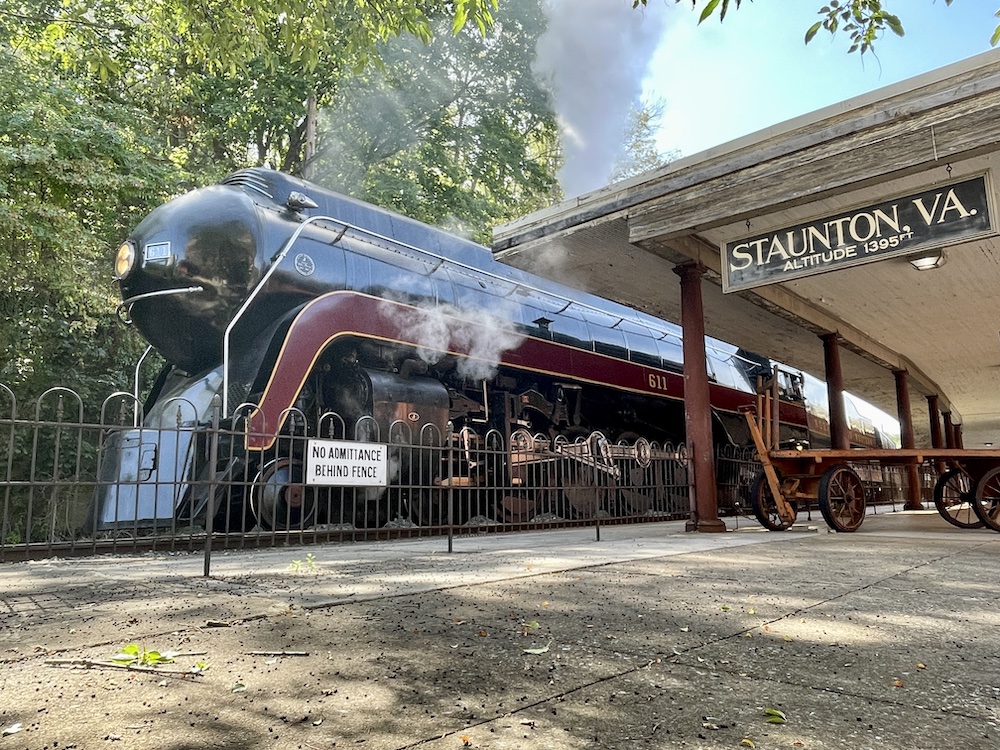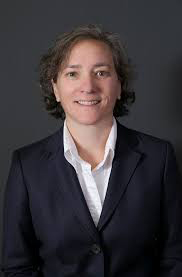New road names and factory-installed sound highlight the latest version of the Atlas Trainman Electro-Motive Division (EMD) GP39-2. We first reviewed a direct-current (DC) version of the GP39-2 in the January 2010 issue. This latest release has a dual-mode ESU LokSound Select decoder that provides realistic sound on Digital Command Control (DCC) and DC layouts.
The prototype. Beginning in 1974, EMD began offering the GP39-2 as a more fuel-efficient alternative to the firm’s popular GP38-2. While the GP38-2 used a normally aspirated 16-cylinder 645 diesel engine, the GP39-2 used a turbocharged 12-cylinder 645 prime mover. The latter produced 2,300 hp and fewer emissions vs. the 2,000 hp GP38-2.
Electro-Motive Division built 239 GP39-2s between 1974 and 1984. Original customers included Atchison, Topeka & Santa Fe Ry.; Burlington Northern; Delaware & Hudson; and Reading Co. Many of these Geeps have soldiered on in shortline service.
The model. Originally built as Delaware & Hudson no. 7615 in 1976, the prototype for our review sample would serve Guilford Transportation and Union Pacific before being sold to the Wisconsin & Southern RR (WSOR) in the early 2000s and numbered 3928. Shortline conglomerate Watco Transportation Services purchased WSOR in 2012.
Our review sample is decorated for no. 3928 after it was repainted in a special livery to commemorate the WSOR’s 35th anniversary in 2015. All lettering is straight and correctly placed. There’s sharp separation between the red and gray paint.
Appropriate for its prototype, the model’s dimensions, including short hood length and long hood details, match a scale drawing of a “phase 1” GP39-2 in the December 1988 issue of Mainline Modeler. Early-production units had an 81″ short hood, while late-production “phase II” units had an 88″ short hood. Later units also had the position of the engine moved rearward by three feet, which shifted the position of the blower ducts, radiator fans, and other details.
The plastic model features well-defined grills, engine-access doors, and other molded detail. The handrails and stanchions are made of flexible plastic to resist breaking. These parts are securely glued to the body shell and straight. The three-chime air horn is also a separate plastic part.
Like other Trainman Series models, the GP39-2 includes drill starter points for the grab irons. Modelers need to supply the grab irons themselves, as well as any other roadname-specific details that they wish to add. For example, the prototype no. 3928 has a cab air conditioner and ditch lights. Tricking out the Geep to look like a specific prototype would be a fun project. A variety of HO diesel detailing parts are available from Details West, KV Models, and others.
Mechanism. After removing the coupler draft-gear boxes, I lifted off the plastic body shell. The model features the same mechanism as a top-of-the line Atlas Master Line model.
A can motor equipped with two brass flywheels rests in the center of the die-cast metal chassis. Driveshafts transfer power from the motor to the truck-mounted gear boxes. Additional metal weights are screwed to the chassis above the front and rear trucks.
The weights also support the main printed-circuit (PC) board, which is mounted above the mechanism. On our DCC equipped sample, the ESU LokSound Select decoder is plugged into a 21-pin socket on the PC board. A downward-facing rectangular speaker in a plastic enclosure is screwed to the weight above the rear truck.
Two light-emitting diodes (LEDs), one at the front of the PC board and the other to the rear of the speaker, illuminate the front and rear headlights and number boxes.
Performance. As shown in the charts at left, the model accelerated smoothly in both DC and DCC speed tests. The locomotive crept along at 1 scale mph without any hesitation or jerkiness. Its top speed of 65 scale mph is close to that of the prototype.
According to our force meter, the GP39-2 has a drawbar pull equivalent to 32 free-rolling HO freight cars on straight and level track. During a hill climb test on our staff layout, the locomotive hauled an 11-car freight up the 3 percent grade.
Full Throttle features. After placing the locomotive on the rails of our DCC equipped layout, I pressed function button 8 and heard the EMD 645 diesel start up. The sound was crisp and clear with no rattles or buzzes.
The ESU LokSound Select decoder in our review sample included the Full Throttle sound and effects package. A button-controlled brake allows for realistic stops without having to use the DCC cab throttle. The Drive/Hold function makes for easy manual notching by keeping the locomotive speed constant while I use the throttle knob to notch the engine rpm up or down.
The horn and bell sounded prototypical. I also enjoyed the realistic dynamic brake sound sequence when I pressed F4 as the locomotive headed downgrade. Other user-triggered effects include the coupler, sanding valve, compressor, and a separate headlight dimmer.
Out of the box, the headlights and number boxes operate according to direction. There is no independent control of the number boxes. However, I programmed the lights on each end to operate manually with separate function buttons for more realistic control.
In addition to changing the locomotive address, I also advance consisted no. 3928 with another DCC-equipped four-axle locomotive. I could also set up function control to work with the consist address.
In addition to re-mapping functions, the decoder has configuration variables (CVs) that control every sound, lighting, and performance feature. I could adjust the volume level of each sound effect, fine-tune the speed curve, and much more. An extensive downloadable user manual is available at www.esu.eu/en/
I find that programming LokSound decoders is an easier and quicker task with the firm’s LokProgrammer computer interface (sold separately for a manufacturer’s suggested retail price of $179.99). For those who don’t wish to purchase the interface, the free ESU LokProgrammer software can also be used without the device to easily find CV values, as outlined in the instructional videos on the ESU website.
DC sound. Like other sound-equipped locomotives, the GP39-2 requires a lot of voltage to get moving. When I advanced the DC power pack to 6V, the lights came on and the engine sounds started. As I advanced the throttle to 7.5V, the engine sounds realistically ramped up before the locomotive started moving. Aside from the engine sounds and directional lighting, there are no other user-controlled effects when the locomotive is operated with a DC power pack.
Back in 2010 the Atlas Trainman GP39-2 was already a smooth performing, solid model of its second-generation diesel prototype. The addition of a fully featured LokSound decoder makes it even better.
Manufacturer
Atlas Model Railroad Co.
378 Florence Ave.
Hillside, NJ 07205
www.atlasrr.com
Era: 1974 to present
Road names: Wisconsin & Southern (Watco Transportation), CSX, Delaware & Hudson, and Union Pacific
Features
Accumate plastic knuckle couplers at correct height
All-wheel drive and electrical pickup
Blackened metal RP-25 contour metal wheels in gauge
Die-cast metal chassis
Eight-pin DCC socket
ESU LokSound Select dual-mode decoder (DCC version)
Five-pole skew-wound motor with dual brass flywheels
Light-emitting diode (LED) headlights and number boxes
Minimum radius: 18″
Weight: 13.3 ounces





